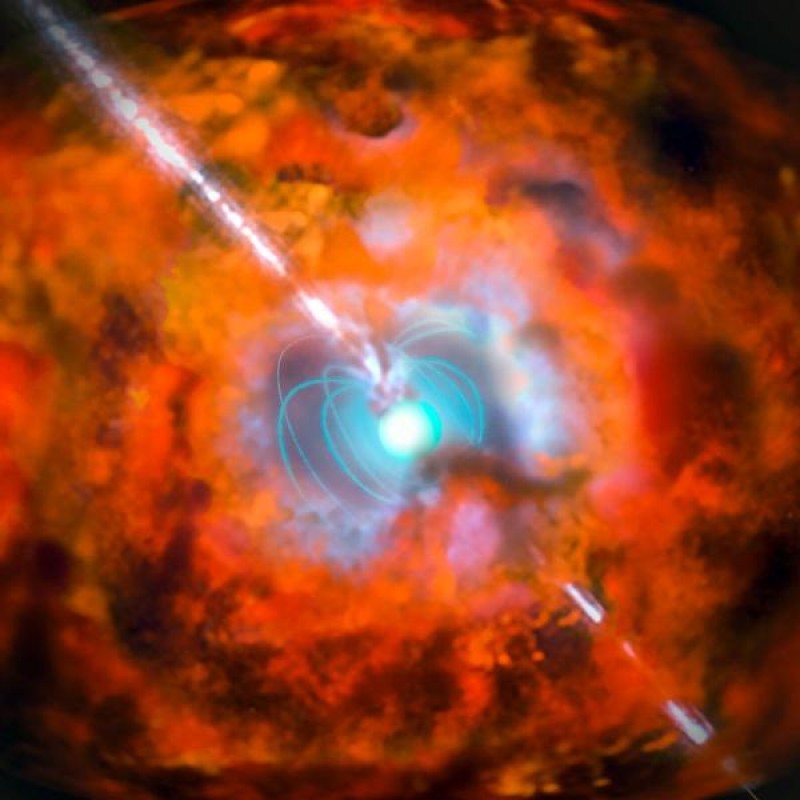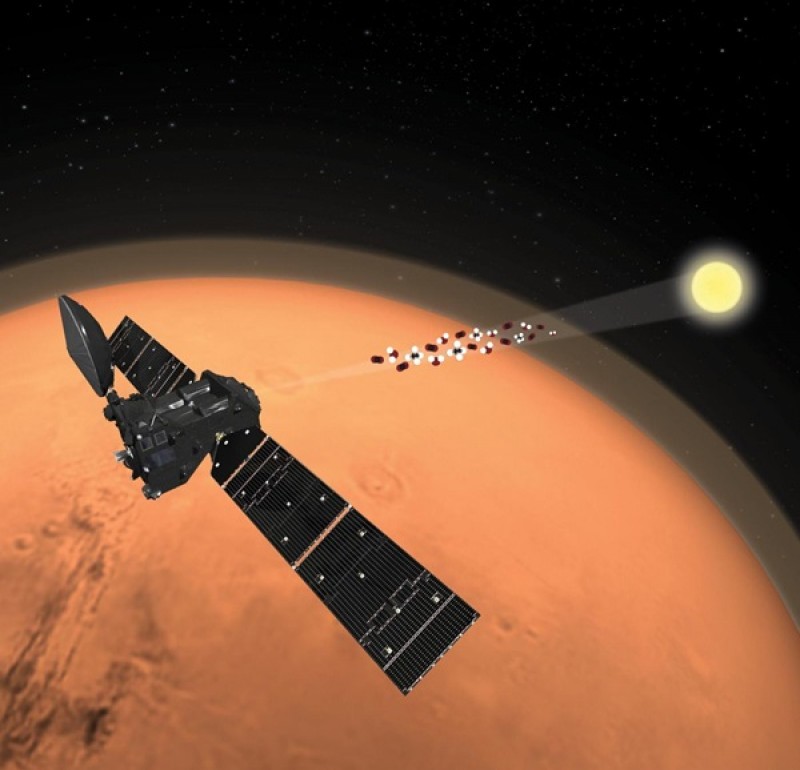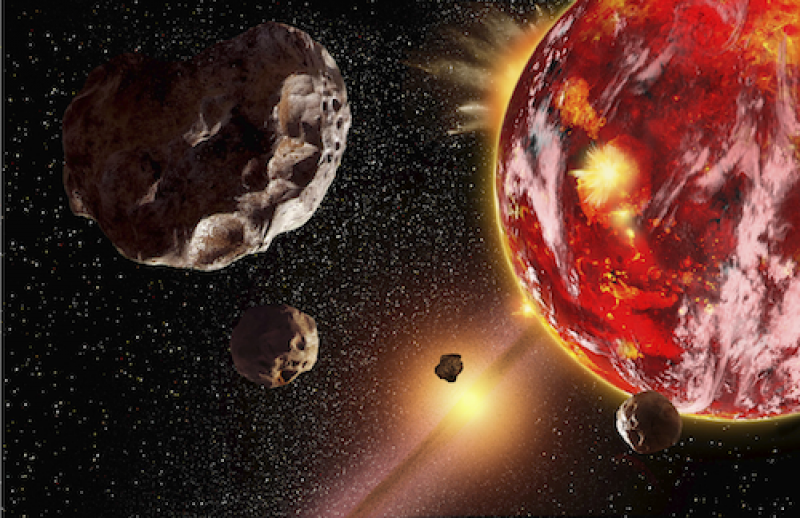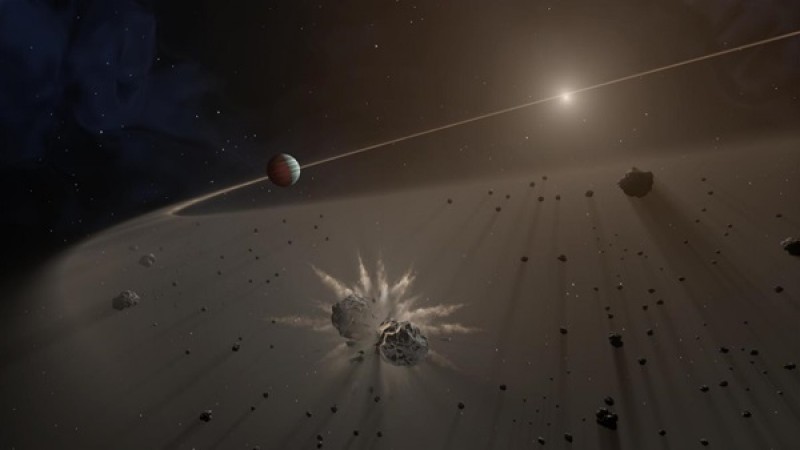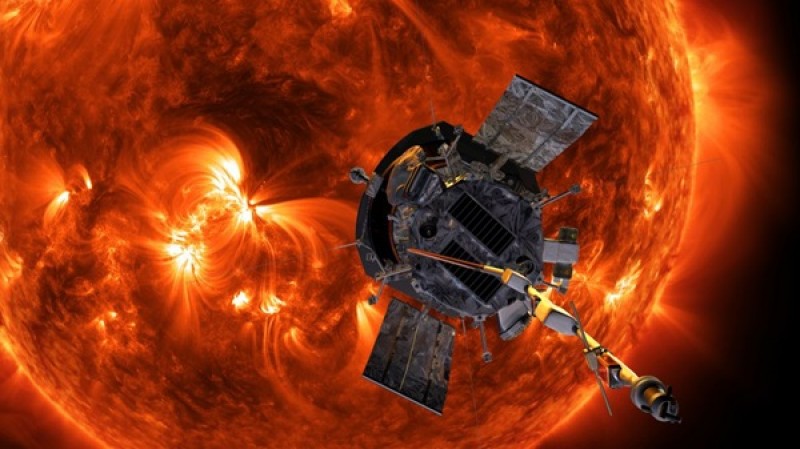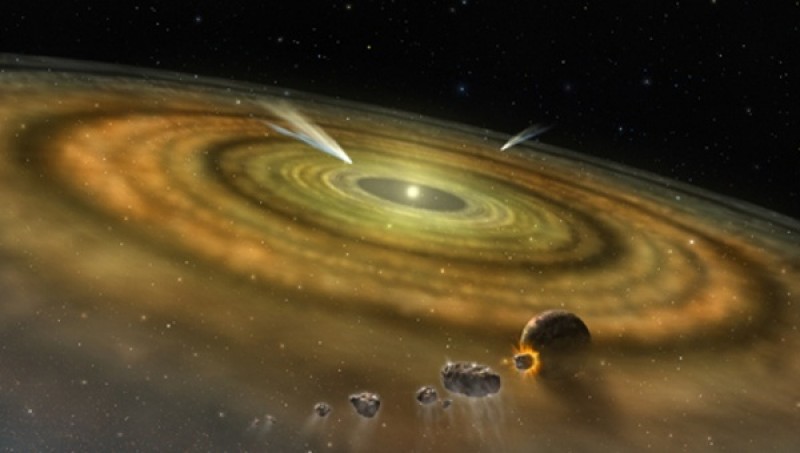Blog
Astronomers Find Second Galaxy with No Dark Matter
Monday, April 22nd 2019 08:32 PM
“Discovering a second galaxy with very little to no dark matter is just as exciting as the initial discovery of DF2,” Yale University’s Professor Pieter van Dokkum.
“This means the chances of finding more of these galaxies are now higher than we previously thought. Since we have no good ideas for how these galaxies were formed, I hope these discoveries will encourage more scientists to work on this puzzle.”
The newly-discovered galaxy, named NGC 1052-DF4 (DF4 for short), resembles DF2 in terms of its size, brightness, and morphology, and has a similar distance of 65 million light-years.
“Like DF2, it belongs to a recently-discovered class of galaxies called ultra-diffuse galaxies (UDGs),” the astronomers said.
“They are as large as the Milky Way but have between 100 to 1,000 times fewer stars, making them appear fluffy and translucent, therefore difficult to observe.”
“Ironically, the lack of dark matter in thes...
Read More
Read More
A new neutron star merger is caught on X-ray camera
Friday, April 19th 2019 09:22 PM
In October 2017, astronomers announced the first detection of gravitational waves from the merger of two neutron stars earlier that year. The event also rung in the era of multi-messenger astronomy, as more than 70 telescopes observed the event’s afterglow in optical light, X-rays, gamma rays, and more. Now, an X-ray signal dubbed XT2 from a galaxy 6.6 billion light-years away has revealed another neutron star merger, which left behind a single, heavier neutron star with an incredibly powerful magnetic field: a magnetar. “We’ve found a completely new way to spot a neutron star merger,” said Yongquan Xue of the University of Science and Technology of China in a press release. Xue is lead author of a paper on the finding, published April 11 in Nature. Furthermore, he says, “The behavior of this X-ray source matches what one of our team members predicted for these events.”
Signals of a merger
When neutron stars spiral together and mer...
Read More
Read More
Boost in the number of US female physicists and astronomers taking faculty positions
Thursday, April 18th 2019 05:34 PM
Around 40% of new astronomy faculty in US universities are women, while a quarter of new physics faculty recruits are female. That is according to data from a recent report by the American Institute of Physics (AIP), which also finds an increase in female representation at postgraduate levels as well as a boost in the proportion of Hispanic women taking physics.
The report — Women in Physics and Astronomy, 2019 — is based on several different surveys that were conducted at physics and astronomy departments across the US. The report finds that, at postgraduate level, the percentage of physics and astronomy doctorates earned by women has risen in the past decade, with 20% of physics and 40% of astronomy doctoral degrees awarded to women in 2017 — up from 18% and 28% in 2007, respectively.
We probably need to do more than just wait for the increase to happen to make many of the department cultures fully welcoming to women
Th...
Read More
Read More
Astronomers Find Universe’s First Molecule
Wednesday, April 17th 2019 07:02 PM
A team of astronomers and a high-flying observatory have finally found the helium hydride ion— the first molecule to come together in the cosmos — in interstellar space.
“The unambiguous detection reported here brings a decades-long search to a happy ending at last,” write Rolf Güsten (Max-Planck Institue for Radio Astronomy, Germany) and colleagues in the April 18th Nature.
Back when the universe was in its infancy, its soup of matter and radiation was too hot to allow the formation of anything like the atoms and molecules that make up the world around us today. Only once the universe turned some 380,000 years old had it cooled enough for protons and neutrons to combine into atoms. (Even then, it remained pretty hot at 4000K, not quite as scalding as the Sun’s visible surface.) Then atoms combined into molecules.
In the Beginning
Given that the universe was largely hydrogen and helium at this time, it’s perhaps no surprise that the uni...
Read More
Read More
The Sky This Week from April 12 to 21
Friday, April 12th 2019 07:00 PM
Friday, April 12First Quarter Moon arrives at 3:06 p.m. EDT. You can find the half-lit orb high in the southwest as darkness falls; it doesn’t set until nearly 3 a.m. local daylight time tomorrow morning. The Moon currently lies on the border between Gemini and Cancer, about 10° south of the Twins’ brightest stars, Castor and Pollux.Saturday, April 13Mercury lies low in the eastern sky before dawn all week. This morning, it appears some 4° high 30 minutes before sunrise. The innermost planet glows at magnitude 0.2 and should appear as an inconspicuous dot to the naked eye, but it stands out through binoculars. Use Venus, which shines brilliantly some 4° to Mercury’s upper right, as a guide.
Pallas near its best
The second asteroid to be discovered remains near peak visibility this week as it slides northwest relative to the background stars of Boötes the Herdsman.
Astronomy: Roen Kelly
Sunday, April 14Asteroid...
Read More
Read More
Now the methane's gone: A martian mystery deepens
Thursday, April 11th 2019 06:58 PM
The European Space Agency’s ExoMars spacecraft failed to find any traces of methane on the Red Planet during its hunt from April to August of 2018. This goes directly against recent positive reports of methane by ESA’s own Mars Express spacecraft and NASA’s Curiosity rover, which both saw methane in 2013.
ExoMars has a sensitive detector that can pick up just one-tenth the amount of methane that Mars Express witnessed. That leaves two options: either one set of observations is in error, or something happened to the methane in the intervening time. The latter option is gaining traction. Given the years-long history of conflicting methane reports on Mars, it’s looking more and more likely that the methane is real. But some unknown process or force *must be* causing it to disappear inexplicably fast.
Piling up the data
The new findings, like the old ones, make some scientists wary, especially given thepossible implications of methan...
Read More
Read More
Where Did Earth's Water Come From?
Wednesday, April 10th 2019 08:47 PM
Karen Meech doesn’t spend a lot of time digging through Earth’s rocks. An astronomer by trade, she is usually behind the telescope, investigating comets and looking for hints about how Earth got its water. But a field trip to Iceland in 2004 ultimately sent her scrambling through the craters of Hawaii nearly a decade later in search of clues about the liquid that helped birth life on this planet.
On that fateful Icelandic tour, Meech saw geothermal areas with gas billowing out of the ground. The guide told the group not to worry — it was only water. “Then she said, ‘This is probably primordial water,’ and it set a lightbulb off,” Meech says. The flavors of water
The source of Earth’s water has been a long-standing mystery; Meech herself has been trying to solve it for at least 20 years. Most of that search has focused on sorting out the various isotopes of hydrogen that go into making the water — or “the flavor...
Read More
Read More
Astronomers discover a chunk of a planet's core around a long-dead star
Monday, April 8th 2019 07:15 PM
White dwarfs are weird objects. These dense cores of dead stars pack as much mass as the Sun into a body about the size of Earth. They're left behind when a small- to mid-sized star ends its life by ballooning into a red giant and blowing off its outer layers in a series of explosive pulses. Although these puffs of ejected material eventually create a beautiful and expansive cloud of glowing gas called a planetary nebula, the process unfortunately tends to wreak havoc on any planets residing nearby. Considering the Sun is destined to become a white dwarf in about 5 billion years, this scenario doesn't bode well for Earth. However, there's a growing dossier of evidence that suggests some planetary systems — including our own solar system — might be able to survive their host star's violent transition into a white dwarf. At least in part. In a new study published today in the journal Science, a team of researchers reported the discovery of...
Read More
Read More
Parker Solar Probe will zoom by the sun again today
Friday, April 5th 2019 10:35 PM
The Parker Solar Probe is zipping through the sun’s outermost layers today at 213,000 miles per hour, enduring sizzling temperatures that would fry most other spacecraft. The probe will come within 15 million miles of the sun, reaching perihelion, its closest point, at 6:40pm EDT. But it’s so close even now that it hasn’t been able to send back data to Earth since March 30. The probe must keep its protective gear pointed straight toward the sun, leaving no wiggle room to point an antenna back toward Earth.The probe has flown this close once before, so it’s tying its own record on this approach. The previous record holder was the Helios 2 mission at 27 million miles, or nearly twice the distance. But by the end of its mission in 2025, the Parker Solar Probe will end up grazing the sun itself, only 3.83 million miles from its surface, within the sun’s outer corona layer.
Touching the Sun
Despite the sun being the closest star, and one that is under nearl...
Read More
Read More
TESS spots its first exocomet around one of the sky's brightest stars
Thursday, April 4th 2019 06:05 PM
The planet-hunting TESS telescope has big shoes to fill — shoes that once belonged to Kepler. Before its retirement last October, the pioneering Kepler Space Telescope spent 10 years paving the way for the search for planets (and possibly life) outside the solar system. Of the nearly 4,000 exoplanets discovered around other stars to date, Kepler found more than half. But now, TESS is up to bat. And it's already off to a great start. Over the next two years, TESS is expected to find roughly 20,000 new exoplanets hiding in the glow of the sky's brightest stars. Additionally, according to NASA's exoplanet exploration website, "TESS will discover dozens of Earth-sized planets and up to 500 planets less than twice the size of Earth." But what about the even smaller stuff? For instance, exocomets. Well, don't fret. TESS can find those too. According to a new study, astronomers have detected an exocomet passing in front of one of the sky's brigh...
Read More
Read More

